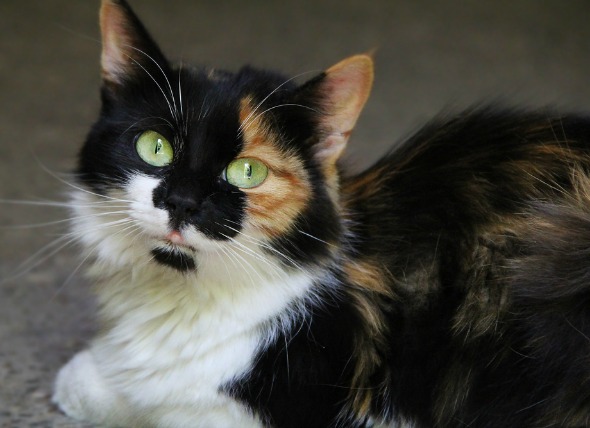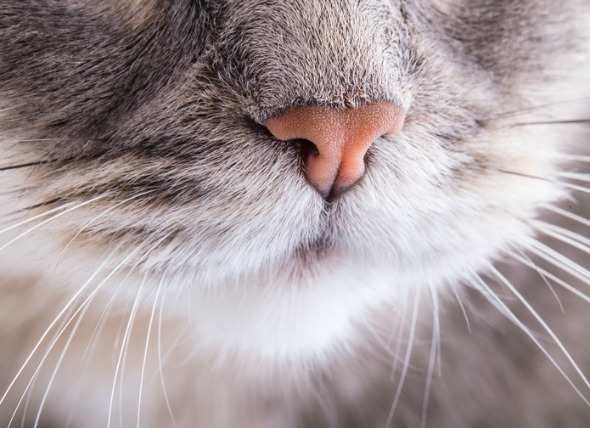

Over 85 percent of mammary tumors in cats are malignant and they tend to grow and metastasize quickly. Like breast tumors in humans, they start as a small lump in a mammary gland. Often, more than one mammary gland is affected. This disease is preventable by having female cats spayed before six months of age.
Mammary gland tumors begin as masses underneath the skin. However, over time they can become aggressive and ulcerate the skin. Cats tend to lick and groom the area excessively, and a strong odor can result as the tumor becomes necrotic and infected. General signs of ill health like anorexia or depression are often seen as the disease progresses.
A fine needle aspirate is typically the tool used to determine whether a small mass is a mammary tumor. An incisional biopsy may also be discussed, but if a fine needle aspirate does not fully diagnose the tumor, complete removal, including wide margins of tissue around the mass, may be recommended due to a high rate of malignancy in cats. A fine needle aspirate of nearby lymph nodes may also be recommended to determine if the mass has metastasized. Radiograph X-rays of the thorax and an ultrasound of the abdomen may determine metastasis to the lungs or other internal tissues.
Because the cat is usually middle aged or older at the time of diagnosis, additional blood work may also be recommended to further determine diagnosis and treatments.
Each cat needs to be thoroughly evaluated before a treatment plan is made since aggressive treatment may not be the best option. However, research and advances in treating mammary tumors continue.
The treatment of choice is surgical removal of the mass and significant surrounding tissue. Depending on the stage of the mammary tumor and area affected, the veterinarian may advise that the regional lymph nodes or additional mammary glands be removed at the time of surgery. One side of the mammary chain (i.e., all mammary tissue on the right or left side) may be removed to prevent further risk to the tissue. Bilateral mastectomies are difficult, but may also be advised to prevent local spread.
In addition, chemotherapy can be used as a treatment. General health factors must be considered in any treatment plan, and consulting with a veterinary oncologist is helpful.
Making the cat comfortable during the remainder of its life is an important goal in treatment. Medications that limit pain or anxiety associated with the mammary tumors may be prescribed. Frequent check-ups are important to identify if the cancer has returned or metastasized.
By spaying cats before the age of six months, the risk of mammary cancer is limited considerably. Less is known about spaying older cats with mammary gland tumors, but it is usually recommended.
Image: g215 via Shutterstock
 Anal Sac Disorders in Cats
Cats have anal glands which produce fluid into sa
Anal Sac Disorders in Cats
Cats have anal glands which produce fluid into sa
 Fever in Cats
Pyrexia in Cats
The normal body temperature for c
Fever in Cats
Pyrexia in Cats
The normal body temperature for c
 Nose and Sinus Inflammation in Cats
Rhinitis and Sinusitis in Cats
Inflammation of a
Nose and Sinus Inflammation in Cats
Rhinitis and Sinusitis in Cats
Inflammation of a
 How to Repel Cats With Citrus
How to Repel Cats With Citrus
How to R
How to Repel Cats With Citrus
How to Repel Cats With Citrus
How to R
 Acid Reflux in Cats
Gastroesophageal Reflux in Cats
The uncontrollabl
Acid Reflux in Cats
Gastroesophageal Reflux in Cats
The uncontrollabl
Copyright © 2005-2016 Pet Information All Rights Reserved
Contact us: www162date@outlook.com